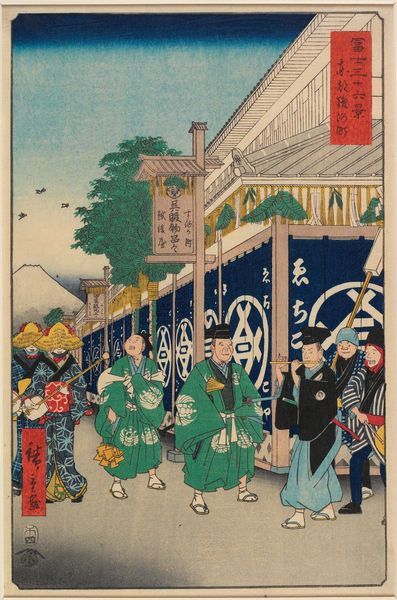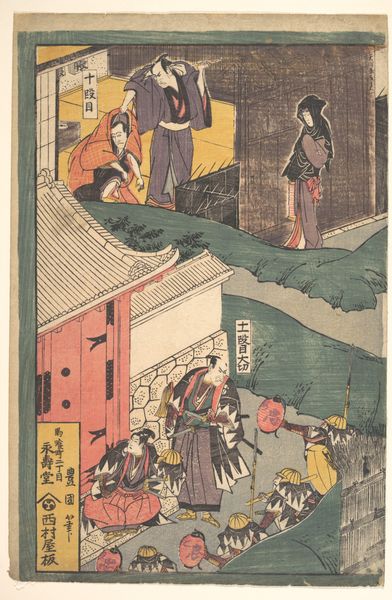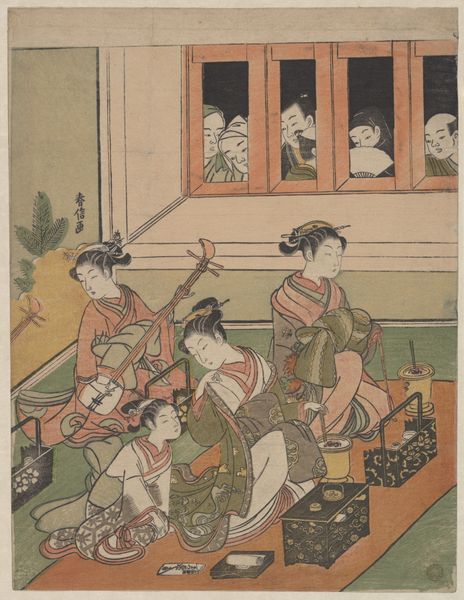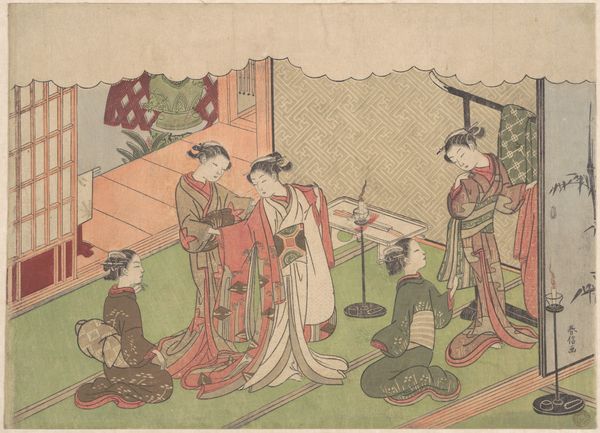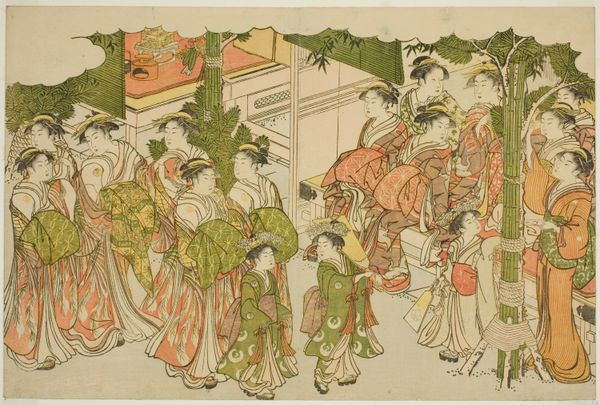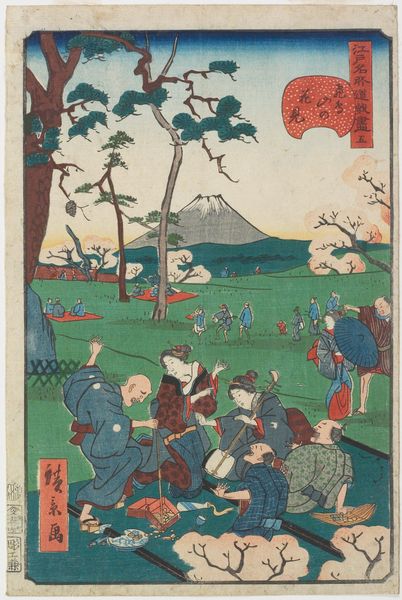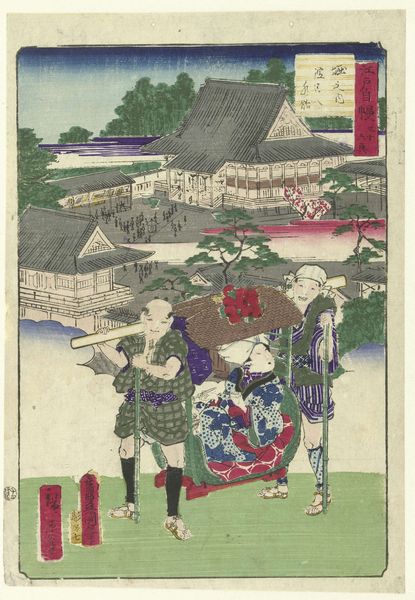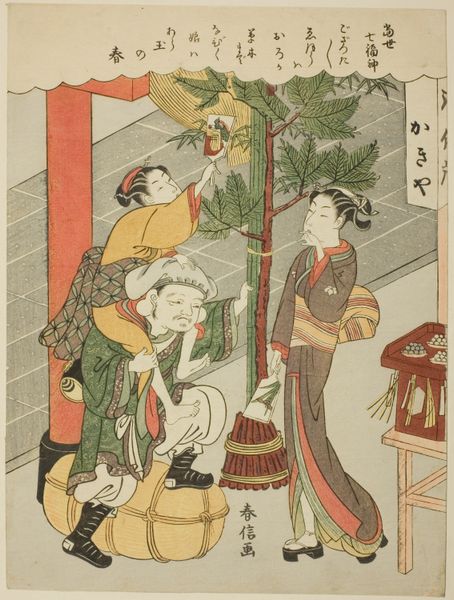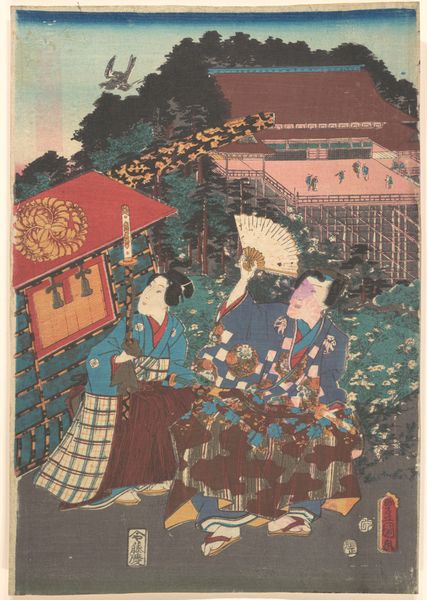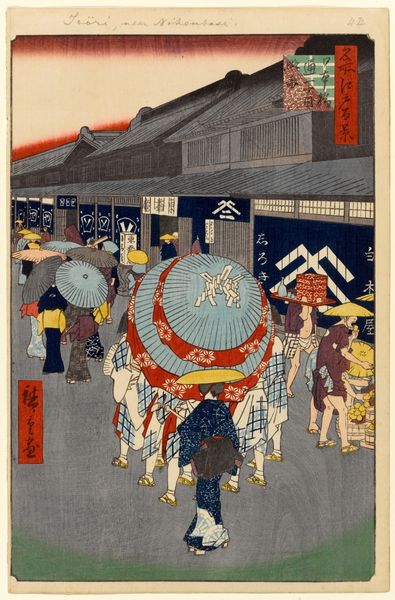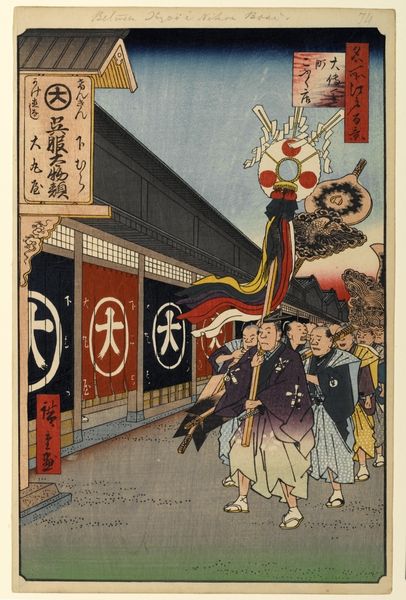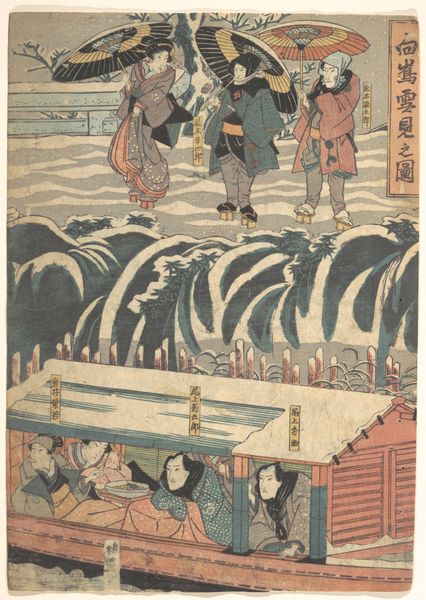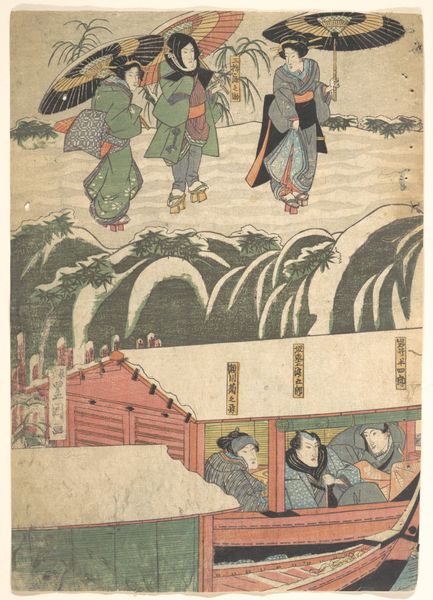
painting, print, woodblock-print
#
painting
# print
#
asian-art
#
landscape
#
ukiyo-e
#
woodblock-print
#
watercolor
Copyright: Public domain
Editor: So, this woodblock print is titled "79 Shiba Shinmei Shrine and Zōjōji Temple" by Utagawa Hiroshige, created around 1857. The crowd in the foreground really grabs my attention – there's a sense of movement, a shared purpose maybe? What symbols do you see woven into this scene? Curator: The most prominent symbol, repeated across the composition, is the circle. Note the umbrellas held high above the people, repeated shapes in the architecture of both temple and shrine. These aren’t just casual shapes. The circle, in Shinto and Buddhist traditions, represents the infinite, enlightenment, a sense of unity and continuity. Does that resonance change your perception? Editor: Absolutely, the circle as unity makes so much sense. Are the people themselves symbolic in any way? Curator: The figures themselves offer a glimpse into the social tapestry of Edo period Japan. The monks, easily identifiable by their attire, represent established religious institutions. But look at the ordinary people interspersed; what might their presence within a sacred space suggest to you? Editor: Perhaps the blurring of boundaries between the sacred and the mundane, faith as part of daily life? Curator: Precisely. Utagawa skillfully interweaves symbols of the spiritual and everyday worlds. The temple and shrine coexisting reflect a tolerance of different religious views, speaking volumes about cultural identity and acceptance. Do you feel that message holds relevance today? Editor: I think so. Finding harmony amidst differing beliefs feels eternally relevant. Thanks, that deeper dive really transformed how I view this piece. Curator: Indeed, by unlocking symbolic layers we enrich our connection to art, bridging time and cultures through visual language.
Comments
No comments
Be the first to comment and join the conversation on the ultimate creative platform.
